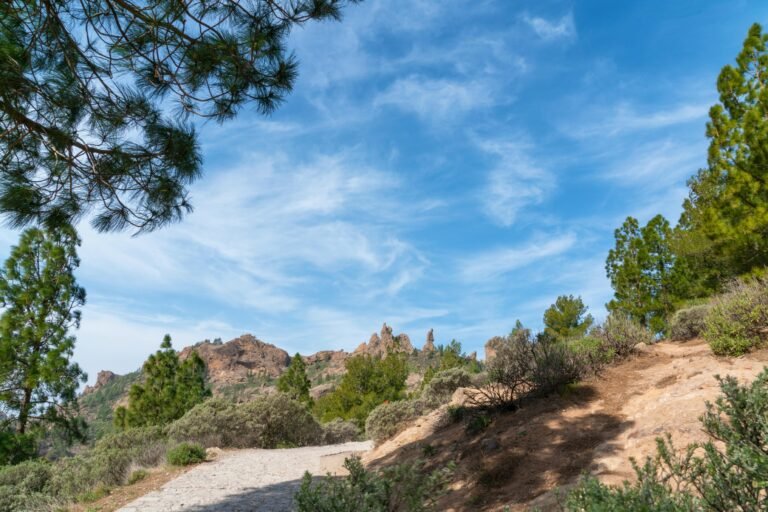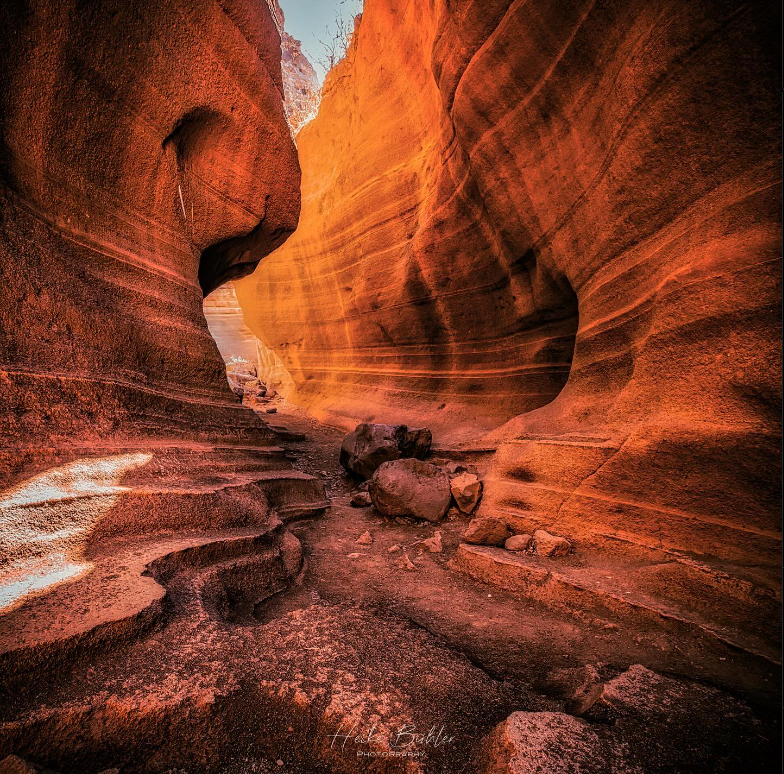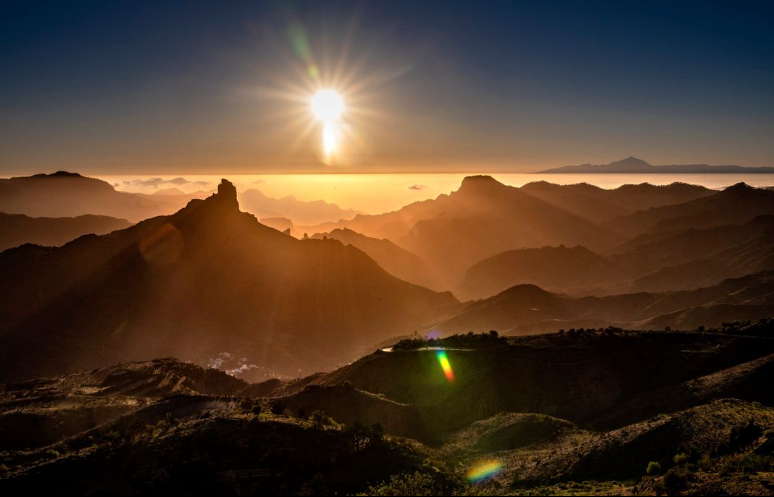These Are The Top 10 Most Beautiful Places in Gran Canaria

Gran Canaria stands as a premier destination for those seeking a sun-soaked getaway, renowned for its idyllic beaches and inviting subtropical climate. Nestled near Morocco, within the Canary Islands, this island paradise offers a plethora of attractions beyond its sandy shores.
While basking on the expansive stretches of fine sand and taking refreshing dips in the Atlantic Ocean epitomize relaxation in Gran Canaria, the island also boasts a wealth of sights and experiences awaiting exploration.
Outlined below is a curated Top 10 list of must-see attractions and the finest excursions. However, the island’s allure extends far beyond these highlights, promising a diverse array of experiences for every traveler to discover.

10. Barranco de las Vacas
The Barranco de las Vacas is a breathtaking ravine adorned with hundreds of palm trees, making it one of Gran Canaria’s most awe-inspiring locations. Within this ravine sits the charming village of Fataga, embodying the quintessential Canarian charm with its narrow cobblestone streets and traditional architecture.
For travelers venturing from the southern regions of the island, a picturesque drive leads to a stunning viewpoint overlooking the ravine, adding an extra layer of allure to an already delightful excursion. It’s truly a splendid day out for all to enjoy!

9. Jardín Canario
The Jardín Botánico Viera y Clavijo, commonly known as the Jardín Canario, stands as Spain’s largest botanical garden, nestled not far from Las Palmas. Encompassing a vast expanse of ten hectares, the garden offers a captivating showcase of over 500 distinct species of Canary plants.
Originally conceived in the 1950s by the Swedish-Spanish botanist Erik Ragnar Stevenson, this park serves not only as a botanical wonderland but also as a significant hub for scientific inquiry. Complementing its diverse flora, the garden hosts essential facilities including a library and several laboratories, further enhancing its role in advancing botanical research.

8. Gáldar
Gáldar, situated in the northern region of Gran Canaria at the foothills of majestic mountains, exudes an authentic charm that captivates visitors. This quaint village offers a delightful setting for leisurely strolls along its narrow streets, immersing oneself in its tranquil ambiance.
Sundays bring an added allure with the bustling local market, where one can peruse and purchase an array of fresh fruits and vegetables sourced from the region. For culinary enthusiasts, Gáldar boasts inviting tapas bars nestled around the central square, Plaza de Santiago, offering delectable delights to savor amidst a picturesque backdrop, complemented by the presence of a striking church.
Venturing a little further, the archaeological museum Cueva Pintada awaits, showcasing centuries-old murals that provide a fascinating glimpse into the rich history of the area, adding yet another layer of cultural richness to the Gáldar experience.

7. Vegueta & Old City
Vegueta, the oldest district of the capital Las Palmas de Gran Canaria, boasts a rich tapestry of history and architectural splendor. Wander through its storied streets and be enchanted by a plethora of magnificent buildings, with the Plaza de Santa Ana standing as the district’s crown jewel. Here, vibrant edifices like the Casas Consistoriales de Las Palmas and the Archivo Histórico Provincial de Las Palmas line your path, leading to the awe-inspiring Catedral de Las Palmas, a Gothic Roman Catholic church dating back to the sixteenth century.
Explore further to discover the Casa de Colón at the Plaza de Colón, a former governor’s residence believed to have hosted the famed explorer Christopher Columbus during his travels. This stately structure now houses a museum dedicated to Columbus’s voyages, offering insight into his historic expeditions.
Vegueta also beckons with cultural treasures such as the CAAM art museum and the Museo Canario, which delves into the prehistory of the Canary Islands, adding layers of depth to the district’s allure for visitors seeking both historical and artistic enrichment.

6. Maspalomas Dunes
Stretching between the popular seaside resorts of Maspalomas and Playa del Inglés lies the captivating landscape of Dunas de Maspalomas, a remarkable sand dune formation reminiscent of the Sahara desert. This unique natural wonder is an absolute must-see attraction on the island of Gran Canaria.
Designated as a protected nature reserve, Dunas de Maspalomas offers visitors the opportunity to embark on scenic walks amidst its sandy expanse. The dunes gracefully meet the shores of Maspalomas Beach at El Oasis, where a serene seawater lagoon encircled by swaying palm trees provides a tranquil oasis and serves as a habitat for various migratory bird species.
For an unforgettable experience, consider visiting the dunes at sunset, when the sand takes on a mesmerizing red hue, casting a magical glow over the landscape. This picturesque spectacle is sure to leave a lasting impression, enhancing your exploration of this remarkable natural marvel.

5. Teror
Stroll through the charming central square, embraced by a medley of historic buildings adorned with vibrant hues, each boasting the iconic Canarian wooden balconies. This picturesque setting offers a delightful glimpse into the architectural heritage of the region. Don’t miss the opportunity to explore the local market held here on Sundays, a beloved tradition that promises a treasure trove of delights.
Teror holds significant importance as a pilgrimage site on the island, drawing devout visitors seeking spiritual solace. According to local lore, the Virgen del Pino, the revered patron saint of Gran Canaria, is said to have appeared in this sacred town. Consequently, a solemn pilgrimage to the Basilica de Nuestra Señora del Pino is organized annually, attracting pilgrims from far and wide.
Within the confines of this eighteenth-century basilica resides an ancient statue of the Virgin, serving as a focal point of reverence and devotion for the faithful, and perpetuating the enduring legacy of faith and tradition in Teror.

4. Tejeda
Nestled in the heart of Gran Canaria, Tejeda beckons with its understated charm and abundance of cultural treasures waiting to be discovered. While the village may be small in size, it offers a wealth of sights and experiences for visitors to enjoy.
A visit to the parish church is a must, providing insight into the religious heritage of the region. Additionally, explore the museum dedicated to the celebrated Canarian sculptor Abraham Cárdenes, offering a deeper understanding of the island’s artistic legacy.
For those intrigued by the healing properties of Gran Canaria’s native plants, a center in Tejeda provides an opportunity to delve into this fascinating subject.
History enthusiasts will find Tejeda to be a veritable treasure trove of archaeological wonders. Explore caves once used as burial grounds, marvel at ancient rock paintings, and discover remnants of prehistoric dwellings and artifacts. Roque Bentayga emerges as a particularly notable archaeological site, revered as a sacred place by the locals. Within its confines, the Cuevas del Rey, or “caves of the king,” offer a glimpse into the lives and beliefs of the ancient inhabitants. The Bentaya Archaeological Park complements this experience, serving as an eco-museum providing valuable insights into the archaeological complex.

3. Puerto de Mogán
Puerto de Mogán, a charming fishing village, earns its nickname “Little Venice” due to its network of canals and bridges that meander through its picturesque landscape. Despite its popularity among tourists, the village has retained its authentic allure, offering visitors a glimpse into its traditional character.
A highlight of Puerto de Mogán is its pristine family-friendly beach, boasting golden sands and tranquil waters ideal for swimming and snorkeling, especially during high tide when the underwater scenery comes alive.
Along the coast lies the renowned marina, a focal point of the village’s coastal charm, where visitors can unwind on the sandy shores while soaking in the vibrant atmosphere.
Noteworthy among the village’s attractions is the Yellow Submarine stationed in the harbor, offering tourists a unique opportunity to explore the island’s underwater wonders and marvel at its diverse marine life. This underwater excursion promises an unforgettable experience, adding an extra layer of adventure to your visit to Puerto de Mogán.

2. Roque Nublo
Roque Nublo stands tall as the iconic emblem of Gran Canaria, a colossal basalt monolith soaring to an impressive height of 80 meters at an altitude of 1813 meters. Surrounding this natural wonder is a rugged landscape that beckons adventurers to embark on picturesque hikes.
Traversing the footpath GC-600 offers a scenic journey to Roque Nublo, guiding travelers through breathtaking vantage points that reveal the island’s stunning vistas. Along the way, you’ll be treated to panoramic views of Gran Canaria’s diverse terrain, with glimpses of Tenerife visible in the distance.
Upon reaching Roque Nublo, visitors are rewarded with a mesmerizing panorama that stretches across Gran Canaria, providing a captivating perspective of the island’s beauty from its lofty heights. This awe-inspiring landmark serves as a testament to the island’s natural grandeur and is a must-see destination for nature enthusiasts and hikers alike.

1. Pico de las Nieves & Tirajana´s Ravines
Pico de las Nieves stands as the pinnacle of Gran Canaria, reaching a lofty altitude of 1949 meters above sea level. Formed from volcanic origins, it ranks among the highest peaks in the Canary Islands, surpassed only by those of Tenerife and La Palma. Perched atop the highest plateau lies a military installation, while a public-accessible viewpoint situated slightly lower offers a panoramic spectacle of the island’s splendor on clear days, unveiling vast expanses of its breathtaking landscape.
In the southern region, the cliffs of Tirajana emerge as another natural wonder, distinguished by their unique geology and geomorphology. Shaped by significant erosion processes over time, these majestic cliffs harbor a rich diversity of indigenous species, adding to their allure as a haven for wildlife amidst the rugged terrain. Exploring the cliffs of Tirajana promises an immersive encounter with the raw beauty and geological marvels of Gran Canaria’s southern landscape.

